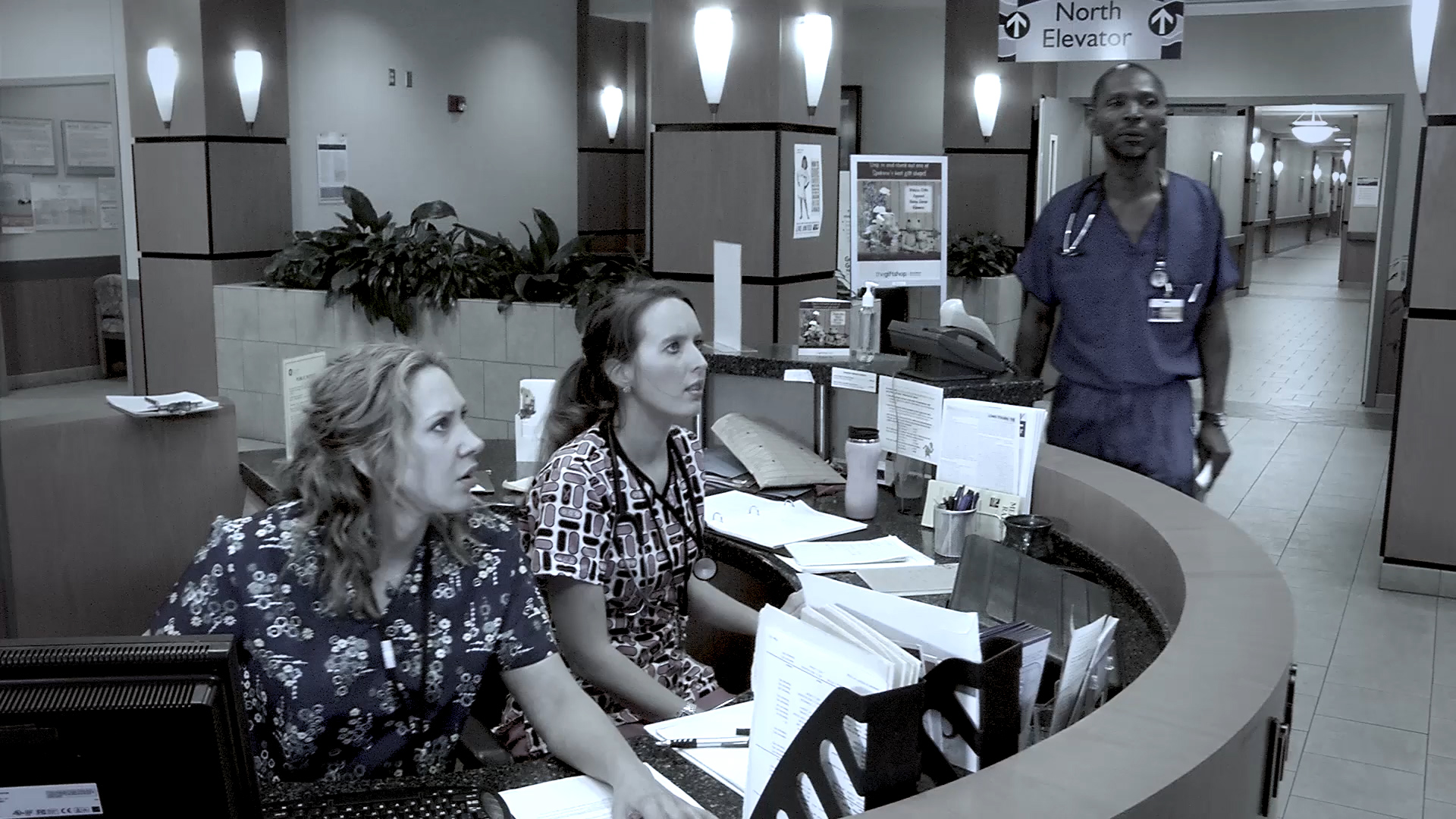H.R. 1195: Workplace Violence Prevention for Health Care and Social Service Workers Act

EXECUTIVE SUMMARY:
On April 16, 2021, the U.S. House of Representatives passed the Workplace Violence Prevention for Health Care and Social Service Workers Act (H.R. 1195). This landmark legislation would require the federal Occupational Safety and Health Administration (OSHA) to create a national standard for Healthcare employers, mandating them to develop and implement a comprehensive workplace violence prevention plan based on guidelines published by OSHA in 2015.
This legislation passed the House with broad bipartisan support on a 254-166 vote and now moves to the Senate for approval. If passed by the Senate, this bill would then be sent to President Biden to be signed into law. This legislation is an incredible moment for health care workers who have long faced threats of violence on the job. It would also place a significant new burden on health care employers.
BACKGROUND:
Health care employees encounter the most on-the-job violence of any sector. A 2018 report from the Bureau of Labor Statistics states that health care and social service industries are five times as likely to endure workplace violence injuries compared to workers overall. And the pandemic has only escalated the issue. According to a study conducted by the largest registered nurses union, 20 percent of RN respondents reported an increase in workplace violence since the beginning of the COVID-19 pandemic.
This legislation is similar to California’s health care workplace violence OSHA standard that was put into place in 2017.


REQUIREMENTS:
H.R. 1195 would impose mandates on applicable organizations and facilities by requiring them to:
- Provide annual staff training
- Investigate violent incidents
- Develop violence prevention plans that include risk assessment, hazard correction, and infrastructure upgrades
- Maintain and retain related records for at least five years
- Report and evaluate information as required by the OSHA 2015 Guidelines for Preventing Workplace Violence for Healthcare and Social Services Workers which require:
-
- Management commitment and employee participation
- Worksite analysis/Tracking and Trending
- Hazard prevention and control
- Safety and health training
- Recordkeeping and program evaluation
If this legislation becomes law, employers will be required to develop comprehensive, organization-specific processes and strategies to prevent violence from occurring in the workplace.
The law would include a variety of sectors and organization types including hospitals, residential treatment centers, social services, correctional or detention facilities, substance use disorder treatment centers as well as federal settings including the Veterans Administration and Indian Health Service organizations.
The consequences are far-reaching and would necessitate the creation of prevention policies, environmental changes, security requirements, training, record-keeping updates, and protections for those who report incidents.
HEALTHCARE INDUSTRY REACTION:
This proposed legislation is being opposed by the American Hospital Association (AHA) an industry advocacy group described as “… the national organization that represents and serves … nearly 5,000 hospitals, health care systems, networks, other providers of care and 43,000 individual members … “
Specifically, AHA cites “prohibitive costs” as a main source of their objection, citing significantly decreased hospital revenues due to COVID-19 related costs and losses. AHA also points out that “hospitals have already implemented specifically tailored policies and programs to address workplace violence.” They go on to say that “we do not believe that the OSHA standards required by H.R. 1195 are warranted, nor do we support an expedited approach that would deny the public the opportunity to review and comment on proposed regulations. “
On the other hand, the proposed legislation is supported by the American Public Health Association (APHA) citing recent statistics showing the incidence of violence against healthcare workers has been increasing steadily and stating, “Assaults and other violence experienced by health care and social assistance workers is a preventable problem that requires a public health approach.”
The American Nurses Association, American Psychiatric Nurses Association, National Nurses United, other major nursing unions, and the American College of Emergency Physicians have all supported this legislation as well.
CONGRESSIONAL BUDGET OFFICE (CBO):
CBO conducted a preliminary cost analysis of this proposed legislation. CBO estimates that the annual net cost to private entities would be at least $1.8 billion in the first two years the final rule is in effect and $750 million annually thereafter. As currently written, the bill would apply to a wide range of health care facilities including both public and private facilities, as well as hospitals and skilled nursing centers operated by state and local governments. CBO estimates that in the first two years in which the final rule is in effect, the annual net cost to public entities would be at least $100 million. CBO also estimates public entities would spend approximately $55 million annually to comply.
The CBO also anticipates these costs would be partially offset by savings from a decrease in payments for workers’ compensation claims that result from workplace violence, which currently amount to several hundred million dollars annually.
The CBO’s analysis of the fiscal impact of this bill also reflects current efforts to mitigate the effects of violence, as cited by AHA and notes that many states already require actions like those outlined in this bill. CBO also anticipates additional benefits to healthcare organizations, including reduced staff turnover and absenteeism, which would represent the potential for additional savings for the healthcare industry.
FISCAL ANALYSIS:
The points outlined in AHA’s objection to this bill are well noted. Healthcare is already a heavily regulated industry and healthcare administrators are understandably cautious about new regulations. It is true that virtually all healthcare organizations have some form of a workplace violence prevention plan in place. What’s missing from this process, however, is standardization. The proposed legislation would help healthcare move forward with a more cogent and unified approach to this systemic problem.
All recent studies confirm that workplace violence is a significant threat to healthcare workers. But many organizations only track violent assaults and not other aggressive behavior or assaults that don’t result in physical injury. To add further complexity, all sides agree that healthcare workers significantly underreport acts of violence, so the industry doesn't have a clear picture of how serious or pervasive the issue is. Adopting a national OSHA standard would not only provide a common vocabulary for defining workplace violence in healthcare, but would also help to standardize reporting and provide meaningful opportunities for analysis of the resulting data.
We concur with APHA that violence against healthcare workers is a public health matter and should be treated as such. Complete, accurate, and meaningful data is critical in developing effective prevention and intervention strategies specific to workplace violence in the healthcare industry.
OUR ANALYSIS:
H.R. 1195 is the latest attempt to pass this kind of legislation. It should be noted, however, that prior efforts have failed earlier in the legislative process. H.R. 1195 is the first such bill to be passed by the House of Representatives and sent to the Senate for action. This bill is currently sitting in the Senate Committee on Health, Education, Labor, and Pensions. Unfortunately, there are currently no hearings scheduled in the Senate for this bill and passage is uncertain at this time. As we head into what is certain to be a lively and contentious mid-term election cycle, this bill may once again languish in committee. However, given the several historical attempts and persistent effort to get this kind of legislation passed, we believe it’s only a matter of time before such a national effort is codified into law. Therefore, we urge organizations to prepare now for the eventual passing of this kind of legislation.


ABOUT DON ROBINSON: For 23 years, Don worked for the FBI – specializing in counterterrorism, organized crime and narcotics investigations, and serving as a regional program coordinator for FBI Domestic Terrorism, Civil Rights and Organized Crime programs. After retiring, Don began a second career in behavioral health where he established one of the first Behavioral Health Crisis Centers and served as the Manager of Behavioral Health Crisis Intervention Services at a 296-bed community hospital.
Don is an experienced Crisis/Hostage Negotiator, a Certified Threat Manager®, and a certified law enforcement instructor. He has trained foreign and domestic governmental agencies, law enforcement/security entities, educational institutions, healthcare organizations, social service agencies and community non-profit organizations. He is an active member of ASIS International and the International Association for Healthcare Security and Safety (IAHSS).


ABOUT JAMES SPORLEDER: James has more than 25 years' experience in the security industry. With a unique background in specialized captivity survival, James has trained thousands of US military personnel from one of the most elite units in the US Department of Defense. He’s worked in the corporate arena for more than 17 years, focusing on the development and implementation of specialized training programs and helping more than 50 percent of the Fortune 100 prepare for and respond to emerging challenges related to workplace violence, intimate partner violence, and extreme violence such as active shooter.





